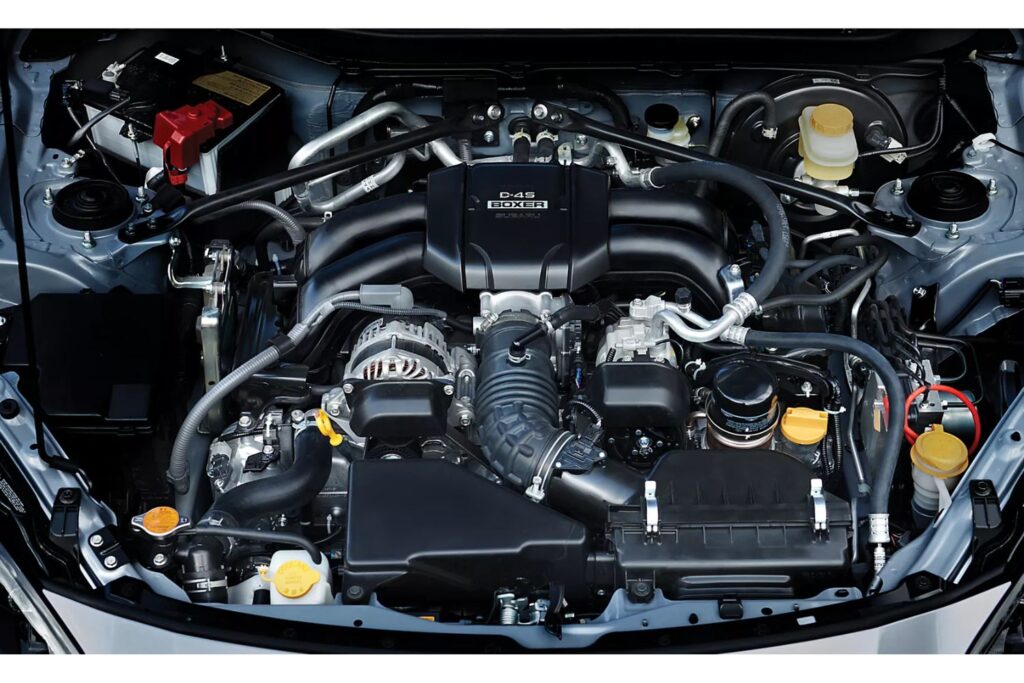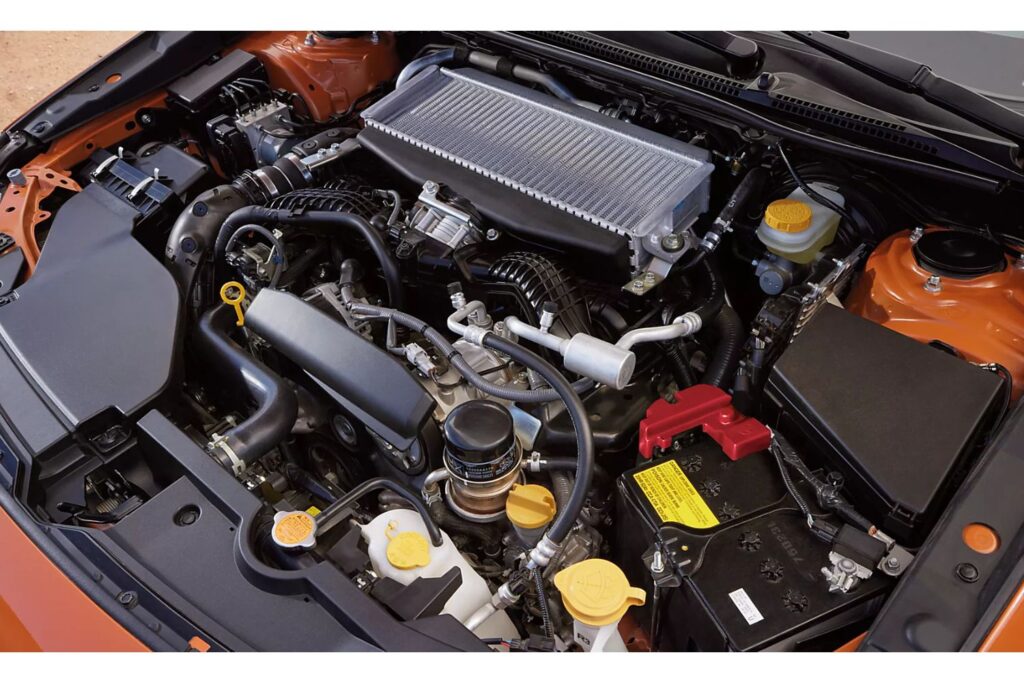
The Subaru Boxer engine is one of the most iconic—and misunderstood—powertrains in modern automotive engineering. Known for its low center of gravity and balanced design, the Boxer layout powers everything from family-friendly Outbacks to rally-bred WRX STIs.
With PatSnap Eureka AI Agent, engineers and enthusiasts can uncover the core mechanical principles, patent evolution, and material innovations behind this horizontally opposed engine design. Whether you’re exploring engine swaps or benchmarking competitive layouts, Eureka provides the data-driven insights that reveal why the Boxer still matters.
What Is the Subaru Boxer Engine?
The Boxer engine, also known as a horizontally opposed engine, features pistons that move side-to-side in opposing pairs rather than up and down like in inline or V engines. This configuration allows for:
- Naturally balanced motion, reducing vibration
- Lower engine height, enabling a low center of gravity
- Improved weight distribution, enhancing handling and vehicle dynamics
Subaru adopted the Boxer architecture in the 1960s and has since refined it across decades. Today, it’s a core identity feature of the Subaru brand—used in all Subaru passenger vehicles and even in the Toyota GR86 / Subaru BRZ sports coupe.

Key Features
- Engine Type: Horizontally opposed flat-four (H4) or flat-six (H6)
- Balance: Naturally balanced without counterweights
- Compact Width: Shorter height but wider than inline engines
- Lower CG: Sits low in the engine bay, improving vehicle stability
- Direct Injection (newer models) for better efficiency
- Turbocharging in performance applications (e.g., WRX, Legacy GT, STI)
- All-Wheel Drive Compatibility: Designed for longitudinal AWD layout
Eureka patent analysis shows that Subaru invested heavily in oil scavenging, cylinder cooling symmetry, and valvetrain compactness to optimize the Boxer platform for modern emissions and safety standards.
Different Variations of the Boxer Engine
Subaru’s Boxer engine has undergone multiple evolutions. Here’s a breakdown of major versions and technical milestones:
EA Series (1966–1994)
- Subaru’s first Boxer engine family
- Air-cooled and water-cooled variants
- Used in early models like Subaru 360, Leone, and Brumby
EJ Series (1989–2021)
- The longest-running and most popular Boxer family
- Available in SOHC and DOHC configurations
- Displacement: 1.5L–2.5L
- Famous versions:
- EJ20 Turbo (WRX/STI) – High-revving rally icon
- EJ25 NA & Turbo – Used in Legacy, Forester, Outback
- Known for: Tuning potential, but prone to head gasket issues (pre-2003)
EZ Series (2001–2020)
- Flat-six (H6) engines
- Used in Legacy 3.0R, Tribeca, and Outback H6
- More refinement and smoother power delivery
- Larger, heavier, less fuel-efficient
FA / FB Series (2010–Present)
- Current-generation Boxer engines
- Focus on efficiency, emissions, and longevity
- FB25/FB20: Found in Forester, Outback, Impreza
- FA20: Used in BRZ/GR86 (NA and turbo versions)
- Direct injection, better cooling channels, and timing chains (replacing belts)
FA24 Turbo (2019–Present)
- 2.4L turbocharged flat-four
- Powers Ascent, Outback XT, Legacy XT, and new WRX
- Offers ~260 hp with better torque than EJ-series turbos
- Better packaging and improved thermal management
Eureka AI Agent tracks technical shifts in oil pressure control, turbocharger positioning, and engine mount geometry across these generations, helping identify design priorities like NVH control and emissions readiness.
Real-World Application & Performance
- AWD Symmetry: Boxer engines pair perfectly with Subaru’s symmetrical AWD layout, enhancing grip and balance.
- Performance Models: WRX and STI models use turbocharged Boxers to deliver quick throttle response and linear power.
- Off-Road Use: Outback and Forester benefit from the engine’s low CG, improving safety and ride quality on uneven terrain.
- Tuning Culture: EJ20/EJ25 turbo engines remain popular in the tuning community for rally, drift, and street builds.
- Motorsports Legacy: Subaru’s success in WRC and Global Rallycross ties directly to Boxer-powered performance and durability.
In PatSnap Eureka, you can analyze how Subaru rebalanced crankshaft harmonics and optimized exhaust pulse flow to suit different tuning profiles.
Market Relevance & Competitive Positioning
The Subaru Boxer engine is a horizontally opposed, four-cylinder engine known for its unique design, where the pistons move horizontally from side to side, rather than up and down. This design offers several advantages that contribute to its market relevance and Subaru’s competitive positioning.
Market Relevance
- Distinctive Design and Engineering: The Boxer engine’s most obvious differentiator is its horizontal layout. This design is shared with high-performance sports cars like those from Porsche, which lends the Subaru engine an air of exclusivity and engineering prowess.
- Smooth Operation and Balance: The horizontally opposed design provides a low center of gravity and reduces vibration, leading to a smoother ride and better handling. This is particularly appealing to drivers who value comfort and precision.
- Fuel Efficiency: The Boxer engine’s design can lead to better fuel efficiency compared to traditional inline or V-shaped engines. This is because the engine’s weight is distributed more evenly, reducing strain and improving efficiency.
- All-Wheel Drive (AWD) Compatibility: Subaru’s Symmetrical All-Wheel Drive system is often paired with the Boxer engine, providing superior traction and control, especially in inclement weather or on rough terrain. This is a significant selling point for customers in regions with harsh climates or who enjoy outdoor activities.
- Performance: The Boxer engine delivers a good balance of power and torque, making it suitable for a variety of driving scenarios, from city commuting to light off-roading. For example, the Subaru Ascent is equipped with a 2.4-liter DOHC Boxer engine that produces 260 horsepower.
Competitive Positioning
- Unique Selling Proposition (USP): The Boxer engine serves as a key differentiator for Subaru in a crowded automotive market. It offers a combination of features and benefits that are not readily available from other manufacturers, setting Subaru apart from its competitors.
- Brand Identity and Loyalty: The Boxer engine is closely tied to Subaru’s brand identity, which emphasizes safety, reliability, and performance. Many Subaru owners are loyal to the brand specifically because of the Boxer engine and its associated benefits.
- Market Segmentation: Subaru targets a specific segment of the automotive market that values the unique attributes of the Boxer engine, such as outdoor enthusiasts, families, and individuals seeking a reliable and capable vehicle. This focused approach allows Subaru to cater to the specific needs and preferences of its target customers.
- Innovation and Heritage: Subaru has a long history of innovation with the Boxer engine, continually refining and improving its design. This commitment to innovation helps maintain the engine’s relevance and competitiveness in the market.
In summary, the Subaru Boxer engine’s market relevance stems from its distinctive design, smooth operation, fuel efficiency, and compatibility with AWD. Its competitive positioning is bolstered by its status as a unique selling proposition, strong brand identity and customer loyalty, targeted market segmentation, and a history of innovation. These factors collectively contribute to Subaru’s success in the automotive industry and the enduring appeal of the Boxer engine.

Innovation & Technology
Technological Advancements
- Symmetrical All-Wheel Drive (AWD): Subaru’s Symmetrical AWD system is intrinsically linked to the Boxer engine. The engine’s low center of gravity and compact design allow the AWD system to be perfectly symmetrical, with the drivetrain evenly distributed along the vehicle’s centerline. This balance provides optimal power distribution and traction.
- Low Noise and Vibration: The horizontal opposition of the cylinders and the counter-movement of the pistons result in a naturally balanced engine. This inherent balance minimizes vibration and noise, creating a quieter and more comfortable driving experience.
- Compact Design: The Boxer engine’s flat design is more compact than traditional engine configurations. This compactness allows it to fit into smaller engine bays, contributing to better weight distribution and more interior space. The engine is designed to fit in the same platform as gasoline engines, showcasing its versatility.
- Thermal Efficiency: Subaru has focused on improving the thermal efficiency of the Boxer engine. By optimizing the compression ratio and gas flow, the four-cylinder engine has achieved thermal efficiency levels comparable to a single-cylinder engine.
- Hybrid System Integration: Subaru has developed a Boxer engine specifically for a new hybrid system. This engine is designed to work seamlessly with the hybrid system, providing higher efficiency and performance.
- Fuel Injection Technology: The 2023 Subaru BRZ features a 2.4-liter direct and port injection Boxer engine. This advanced fuel injection system improves fuel efficiency, power output, and emissions control.
- Diesel Engine Variant: Subaru introduced a 2.0-liter horizontally-opposed four-cylinder diesel engine for passenger cars. This engine produces 110 kW of maximum power and 350 Nm of maximum torque, while emitting only 148 g/km of CO2, the lowest in European 2.0 L All-Wheel Drive (AWD) passenger cars.
Benefits and Advantages
- Improved Handling and Stability: The low center of gravity of the Boxer engine enhances vehicle stability and handling, providing a more engaging and confident driving experience.
- Enhanced Comfort: The reduced noise and vibration of the Boxer engine create a quieter and more comfortable cabin environment.
- Better Weight Distribution: The compact design of the Boxer engine allows for improved weight distribution, contributing to better balance and performance.
- Higher Efficiency: The optimizations in thermal efficiency and the integration with hybrid systems result in a more fuel-efficient engine.
- Powerful Performance: The Boxer engine delivers strong power output and torque, providing a dynamic and exhilarating driving experience.
PatSnap Eureka AI Agent Capabilities
PatSnap Eureka helps automotive professionals:
- Search patents by engine generation or layout (e.g., FA24 vs EJ25)
- Compare Subaru’s engine designs with competitors like Toyota, Porsche, or Honda
- Visualize part-level innovation in crankshafts, cylinder heads, and exhaust manifolds
- Track emissions compliance by generation and identify material changes
With Eureka’s deep search tools and technical Q&A interface, you can unlock how the Subaru Boxer evolved to meet global safety, emissions, and performance targets—all in one data-rich platform.
Conclusion
The Subaru Boxer engine transcends a mere mechanical design—it embodies the brand’s core philosophy. Its horizontal opposed layout delivers inherent balance, lowers the vehicle’s center of gravity for superior handling, and synergizes seamlessly with Subaru’s legendary all – wheel – drive (AWD) system, defining both safety and performance.
From the early EA – series compacts to the contemporary FA24 turbocharged powerplants, Subaru has persistently evolved this distinctive architecture. Each iteration responds to shifting driver expectations, tightening emission regulations, and competitive technological leaps, proving that the Boxer remains not just a technical choice but a cornerstone of Subaru’s identity—an enduring legacy of innovation in automotive engineering.
FAQs
They lower the center of gravity, reduce vibration, and pair well with Subaru’s symmetrical AWD layout.
Higher maintenance costs, potential oil consumption from uneven lubrication, and higher manufacturing costs.
FA/FB engines feature better emissions control, timing chains, and direct injection. They’re more efficient but less tunable than EJ engines.
In daily use, yes. It’s more efficient, smoother, and stronger at low RPMs. But the EJ25 still has more tuning headroom for racing applications.
Yes. Porsche uses flat-six engines in its 911 series. Toyota uses Subaru’s FA engines in the GR86/BRZ platform.
To get more detailed scientific explanations of the subaru boxer engine, try PatSnap Eureka AI Agent.

